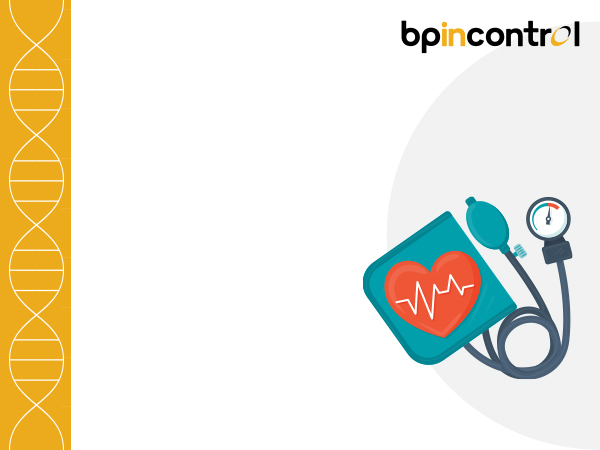Echocardiogram – Echo Tests and its Treatment

Table of Contents
What is an Echocardiogram or Echo test?
If you are curious about the inner workings of your heart, you may be interested in learning about echocardiography. If you are wondering what is echocardiography? It is a non-invasive medical imaging procedure that uses high-frequency sound waves to create detailed images of the heart’s structure and function, these images are called echocardiograms. Echocardiography or echo tests are a powerful tool that helps doctors diagnose a variety of heart conditions, ranging from valve problems to congenital defects. So, let’s take a closer look at what is echocardiography and how it can help keep your heart healthy.
When is an echocardiogram used?
An echocardiogram, or echo test for the heart, is a valuable tool that helps doctors evaluate the health of the heart and diagnose a variety of heart conditions. This non-invasive imaging test uses sound waves to create detailed images of the heart’s structures, such as the heart’s chambers, valves, and blood vessels. An echo test can help diagnose heart conditions such as heart valve disease, heart failure, aortic aneurysms and congenital heart defects. It can also be used to monitor the effectiveness of treatments and to assess the overall health of the heart.
What do Echocardiogram results show?
An echo test for the heart is a non-invasive diagnostic test that uses high-frequency sound waves to produce images of the heart. This test is a valuable tool for identifying various heart conditions and evaluating the effectiveness of treatments for heart disease.
- Echo test results can provide important information about the size, shape, and function of the heart, as well as the blood flow through the heart and blood vessels.
- The test can help identify a variety of heart conditions, including valve problems, heart defects, fluid buildup around the heart, and abnormalities in heart function or structure.
- It can also be used to evaluate the effectiveness of treatments for heart disease and to monitor the progress of certain heart conditions over time.
During an echocardiogram, a trained technician or doctor will apply a special gel to the patient’s chest and place a small device called a transducer on the skin. The transducer emits high-frequency sound waves that bounce off the heart and create detailed images of the heart’s structure and function. The technician or doctor will carefully examine these images to look for any abnormalities or irregularities in the heart.
What are the different Types of Echo tests for the Heart?
Several different types of echocardiogram tests may be used to evaluate different aspects of heart health. Some of the most common types include:
- Transthoracic echocardiogram (TTE): This is the most common type of echo test and involves placing a transducer on the chest to produce images of the heart.
- Stress echocardiogram: This type of test is performed while the patient is exercising or receiving medication to increase the heart rate, allowing doctors to assess how the heart functions under stress.
- Transesophageal echocardiogram (TEE): This test involves inserting a small transducer into the oesophagus to get a closer look at the heart’s structures and functions.
The specific type of echo test that a doctor recommends will depend on the patient’s individual needs and the suspected heart condition.
What techniques are used in Echo Test?
During an echo test, several techniques are used to obtain information about the heart’s structure and function. These techniques include:
- Two-dimensional or three-dimensional echocardiogram: This type of test produces a 2D or 3D image of the heart, allowing doctors to see the heart from all angles and evaluate its function more accurately.
- Doppler echocardiogram: This test uses sound waves to measure the speed and direction of blood flow through the heart, providing information about valve function and blood flow.
- Colour flow imaging: This technique displays the blood flow in the heart in colour, helping to identify leaky heart valves and other changes in blood flow.
In addition, there are specialised types of echocardiograms that may be used in specific situations, such as stress echocardiograms to evaluate the heart’s response to physical activity and fetal echocardiograms to evaluate the heart of an unborn baby.
Conclusion
If you are experiencing any symptoms related to heart disease or have a family history of heart problems, it is important to speak with a physician and get regular check-ups. An echo test is a valuable tool in diagnosing and monitoring heart conditions. With the right diagnosis, treatment, and lifestyle changes, including stress management activities for hypertension, you can take control of your heart health and live a healthy life. If you need help finding a physician near you, please visit our Find a Physician webpage and schedule an appointment today to start taking the necessary steps towards a healthier heart.
FAQs on Echocardiogram or Echo Test
1) Is the echo test better than ECG?
Both tests serve different purposes. ECG measures the electrical activity of the heart while the echo test produces images of the heart using sound waves. The two tests are often used together to obtain a complete picture of the heart’s health. In some cases, an echo test may be more effective in detecting certain heart conditions than an ECG.
2) What heart problems can an echo detect?
An echocardiogram can detect various heart problems, including valve problems, heart defects, fluid buildup around the heart, and abnormalities in heart function or structure. It can also help evaluate the effectiveness of treatments for heart disease and monitor the progress of certain heart conditions over time.
3) What if the echo test is positive?
If the echocardiogram shows abnormalities or a heart condition, the doctor may recommend further tests, such as a stress test, cardiac catheterization, or other imaging tests. Depending on the severity of the condition, the doctor may prescribe medications, recommend , or refer the patient to a specialist for further treatment.
4) What is echo normal range?
EF, or ejection fraction, is a measure of the heart’s efficiency in pumping blood out of the left ventricle, and it is an important parameter assessed during an echocardiogram or echo test. The normal range for EF is typically between 55-65 percent. An echo test can produce detailed images of the heart and provide the necessary information to calculate the EF. An EF of less than 40 percent, as determined from an echo test, is generally considered a sign that the heart is not functioning as well as it should be.
5) Why do doctors suggest echo tests?
Doctors may suggest an echo test to diagnose or monitor heart conditions, evaluate the effectiveness of treatments for heart disease, or assess the heart’s overall health. An echo test for the heart is also helpful in detecting heart problems in their early stages, allowing for prompt treatment and management of the condition. The test is non-invasive, painless, and produces detailed images of the heart, making it a valuable tool in the diagnosis and management of heart disease.
Disclaimer
The information contained in this article is to educate, spread awareness in relation to hypertension and other diseases to the public at large. The contents of this article are created and developed by BPinControl.in through its authors, which has necessary, authorisations, license, approvals, permits etc to allow usage of this articles on The Website. The views and opinions expressed in this article are views, opinions of the respective authors and are independently endorsed by doctors. Although great care has been taken in compiling and checking the information in this article, The Website shall not be responsible, or in any way liable for any errors, omissions or inaccuracies in this article whether arising from negligence or otherwise, or for any consequences arising therefrom. The content of this article is not a substitute for any medical advice. The Website shall not be held responsible or liable for any consequence arising out of reliance on the information provided in the article.


Comments (0)
No comments found.Add your comment